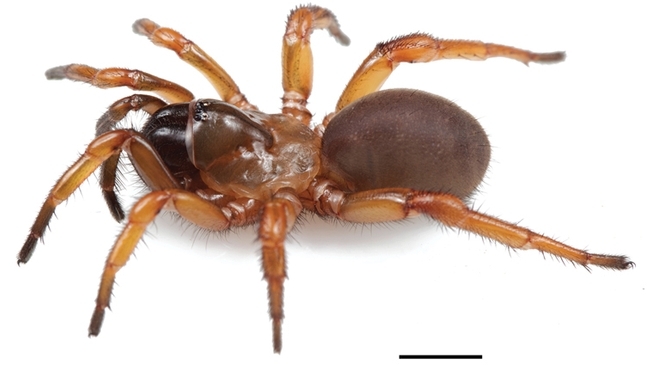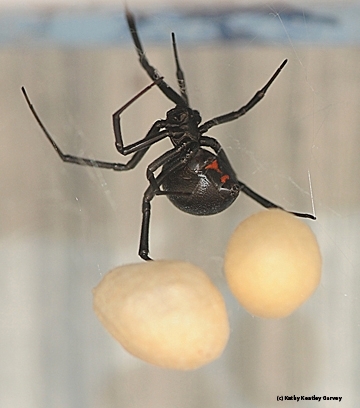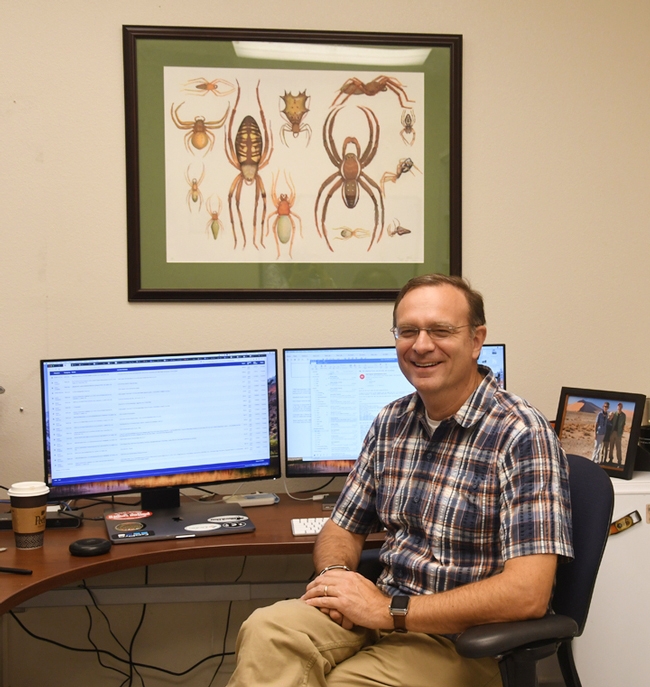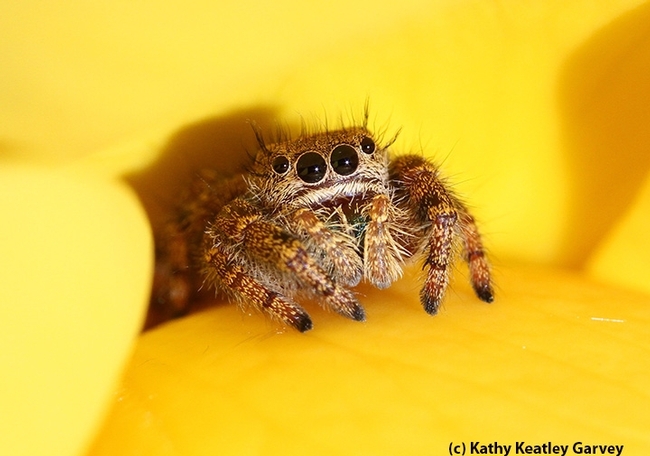
But have you heard of the "Eight-Legged Wonders?"
You won't want to miss the "Eight-Legged Wonders" open house from 1 to 4 p.m., Saturday, March 9 at the Bohart Museum of Entomology, University of California, Davis.
If you miss it, you'll miss your opportunity to learn about spiders from an international expert, and miss the opportunity to "Assemble an Arachnid," "Create a Chelicerate" and "Eat Like a Spider."
Eat like a spider? Tabatha Yang, Bohart Museum's education and outreach coordinator, related you'll get to “slurp up soggy cookies.”
The event, free and family friendly, takes place primarily in Room 1124 of the Academic Surge Building on Crocker Lane.
Arachnid expert Jason Bond, who is the Evert and Marion Schlinger Endowed Chair in Insect Systematics in the UC Davis Department of Entomology and Nematology, will present a 10-minute slide show at 1 p.m. in the Museum of Wildlife and Fish Biology classroom, located on the first floor of the Academic Surge Building, next to the Bohart Museum.

You'll see live specimens and specimens in alcohol. You'll learn the differences between woolly silk and sticky silk. You'll also see the Bohart arachnids--tarantulas--and hold some of the non-arachnids, including walking sticks and Madagascar hissing cockroaches.
“Spiders are an incredibly diverse group with more than 50,000 species described with probably another 200,000 remaining to yet be discovered,” says Bond, who joined the department last July from Auburn University, Alabama. “They are quite ancient, with fossils dating back well over 300 million year and are known to be exclusively predatory. In fact, based on a study published last year, spiders are estimated to consume somewhere in the neighborhood of 800 million tons of insect biomass.”
“To capture insects, and other prey item--sometimes even vertebrates--most spiders employ silk and venom to snare and subdue their victims,” the arachnologist says. “Spider silk is an amazingly strong, proteinaceous material that is produced in many different forms; venoms are likewise complex, diverse proteins. All of this to say – what's not to like – spiders are a tremendously ecological important predatory group, that has persisted on the planet for 100s of millions of years and employ a remarkable suite of silks and venoms to make a living.”
Highly respected for his expertise on spiders, Bond served as the plenary keynote speaker at the 2016 International Arachnological Congress, and also keynoted the 2012 European Arachnological Congress.
Born in Johnson City, Tenn., Bond is a U.S. Army veteran who served for a number of years as a UH-60 Blackhawk helicopter crew chief. He received his bachelor's degree in biological sciences, cum laude, in 1993 from Western Carolina University, Cullowhee, and his master's degree in biology in 1995 from Virginia Polytechnic Institute and State University, Blacksburg. He earned his doctorate in evolutionary systematics and genetics in 1999 from Virginia Tech.
All three degrees focused on arachnids. His undergraduate thesis involved silk spigots; his master's degree, systematics of the spider genera Mallos and Mexitlia; and his doctoral dissertation covered “Systematics and Evolution of the Californian Trapdoor Spider Genus Aptostichus Simon (Araneae: Mygalomorphae: Cyrtaucheniidae).”
What drew him to arachnology? As an undergraduate researcher at Western Carolina University, Bond worked with noted arachnologists Jackie Palmer and Fred Coyle. “My first research project was related to functional morphology (evolution of the spinning apparatus in more primitive spiders) but quickly shifted to systematics and taxonomy.”
Bond joined the UC Davis faculty after a seven-year academic career at Auburn University, Ala. He served as professor of biology and chair of the Department of Biological Sciences from January 2016 to July 2018, and as curator of arachnids and myriapods (centipedes, millipedes, and related animals) at the Auburn University Museum of Natural History, from August 2011 to July 2018.
It was at Auburn University where Bond and his colleagues discovered a new species of trapdoor spider that drew international attention and a news story in the Huffington Post. They named it Myrmekiaphilia tigris, or the Auburn Tiger Trapdoor Spider, in honor of the university's costumed tiger mascot, Aubie. The discovery was exciting but not “surprising,” Bond told the Huffington Post, pointing out that it took taxonomists about 250 years to describe about 1.8 million plants and animals, and that this scratches the surface of what scientists estimate to be between five and 30 million overall species on earth.
The amazing eight-legged wonders!
Attached Images:

